Scotland in the 19th century
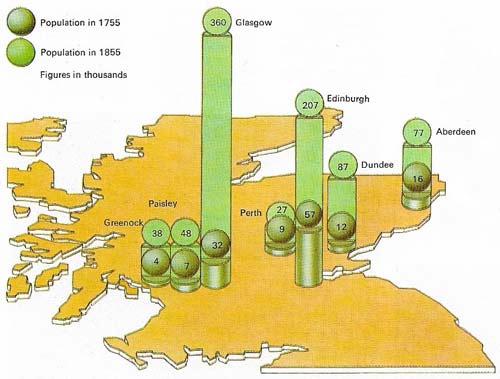
Figure 1. Industrialization in Scotland was accompanied by rapid urbanization, not so much in the foundation of new towns as in the very rapid growth of old ones: Glasgow, for example, had 23,000 inhabitants by about 1750 when it was already the second town of Scotland, but it had 329,000 by 1851. Nevertheless there were new towns, which often grew very fast. Airdrie, for instance, had a population of 1,200 in 1755, but with the development of iron and coal in Lancashire it exceeded 13,000 by 1851. But primitive sanitation, unimproved from a previous era, menaced the growing towns with ominously increased mortality.
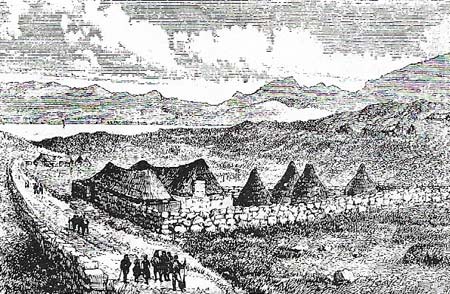
Figure 2. The Highlands' economy collapsed in the early 1800s and this resulted in a grim outlook for crofters such as these. Prices for three of the four main staples – cattle, kelp and fish - had fallen disastrously and only wool was still viable. This meant that wealthy sheep farmers from the Lowlands began to introduce their animals into the crafters fertile plots. Also result, the green summer pastures were quickly overcropped. The crofters themselves were usually evicted to the outskirts. Such evictions were sometimes executed considerately, but at other times the action was ruthless, causing great hardship.
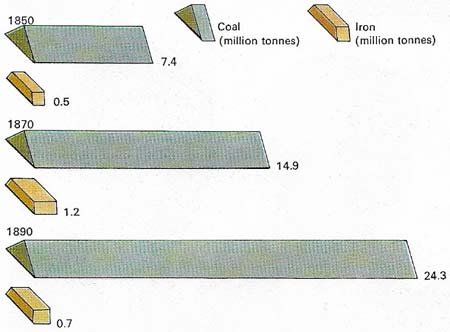
Figure 3. Economic growth in early Victorian Scotland was firmly based on Scottish natural resources, but with the invention of cheap steel after 1870 many of the ores had to be imported from various countries. The soaring indices of production point to an economy increasingly dependent on a narrow base of heavy industry. For example, by 1900 much of the metal went into the great ships being built in the yards along the Clyde.
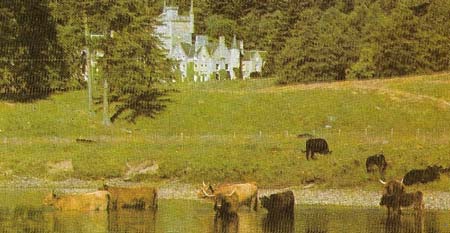
Figure 4. The new castle at Balmoral was the apotheosis of Queen Victoria's love of the romantic. In 1856 she wrote of it in her diary: "Every year my heart becomes more fixed in this dear paradise…and so much so now, that all has become my dear Albert's own creation…" the castle, standing about 80 km (50 miles) west of Aberdeen on the banks of the river Dee, was bought by Prince Albert for the royal family in 1852.

Figure 5. Nineteenth-century Scotland was like a bath with the taps full on and the plug out. There was a rapid natural increase accompanied by an inrush of Irish immigrants to the looms, mines, and Ironworks of the Central Belt. At the same time, many native Scots, especially Gaelic-speaking Highlanders unwilling to move to an unfamiliar urban life, chose to go to Canada, and also to Australia, the USA, and New Zealand. This outflowing tide resulted not so much from lack of opportunity at home as from the enticement of kinfolk already abroad. Few European nations apart from Ireland and Norway lost so much of their natural increase.
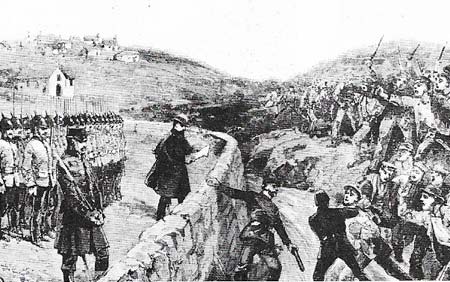
Figur 6. The decision of a handful of crafters to resist eviction by force in 1882 alarmed the government, who sent a gunboat to Skye to put down the "rising". It was cheered by the peasants, who believed that Queen Victoria had come to hear their grievances.
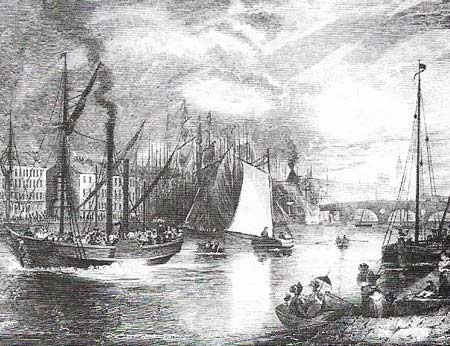
Figure 7. The industries and slums of Clydeside were the central paradox of 19th-century Scotland. On the one hand they produced the greatest wealth Scotland has ever known - by 1906 wage rates were higher than in most of England. On the other hand, they had a population whose housing conditions were worse than any in Britain: even in 1911 two-thirds of the population lived in houses that had only one or two rooms.
The political framework of 19th-century Scotland continued to be union with England but, by the end of the century, in place of the handful of privileged voters who had elected MPs under the old regime, something approaching a democracy based on adult male suffrage had been achieved. This had been the work of successive Reform Bills in 1832, 1867, and 1884. Eventually Scotland was electing 72 MPs from constituencies that gave weight to the Scottish urban population, and its share of the Westminster parliament – 670 MPs – fairly reflected the Scottish proportion of British population.
The beginnings of socialism
Following the triumph of the Whigs under Francis Jeffrey (1773–1850) and Henry Cockburn (1779–1854) at the time of the Great Reform Bill of 1832, Scotland settled down to become loyally Liberal – 53 MPs were elected under William Ewart Gladstone's colors compared to seven Conservatives in 1880, although the split in the party over Irish Home Rule in 1886 shook this allegiance seriously. At the same time there was a Scottish radical tradition to the left of this mainstream.
It surfaced at the time of the so-called Radical War in 1820, which was really a combination of a strike and a small abortive rising in the Glasgow area. It was seen again with the Chartists between 1838 and 1848, although the Scottish Chartists mainly disapproved of physical force and sought reformation through temperance and democracy. And in 1888 socialism struck root with the foundation of the Scottish Labour Party and the rise of Keir Hardie (1856–1915) who later became the leader of the British Independent Labour Party (ILP) in 1893. Trade unionism grew rapidly, especially in skilled trades and among the cotton spinners and miners, although a Scottish Trades Union Congress (with 40,000 members) was not founded until 1897.
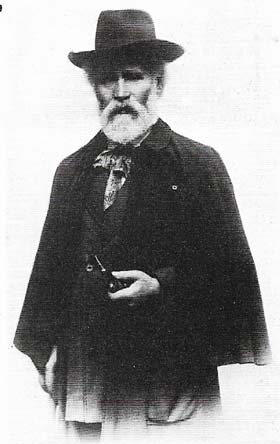 |
| Keir Hardie (shown here) and R. B. Cunninghame Graham (1852–1936) were the fathers of socialism in Scotland. Hardie became leader of the British ILP and was described as "the best-hated and best-loved man in Great Britain". In 1928 Cunninghame Graham helped to found the Scottish National Party. Hardie was a confirmed pacifist and was fervently opposed to the Boer War. He also favored women's suffrage, and founded The Labour Leader, a Scottish newspaper. |
Generally speaking, there was little dissatisfaction over union with Britain, although because Westminster was increasingly obliged to legislate for Scottish affairs as the problems of industrial society became more complex (by reforming the Poor Law in 1845 and the school system in 1872, for example) there was more demand for specifically Scottish experts in the government. This was met in 1885 by the creation of a Secretary of State for Scotland and a Scottish Office based in London and Edinburgh. A small nationalist movement arose at the end of the century; few took it seriously, although Hardie and other early socialists also favored Home Rule. For many Scots, Church politics were more significant than national ones; the Disruption of the Church of Scotland in 1843 into the Established Church and the Free Church over the question of who should choose the ministers generated enormous excitement.
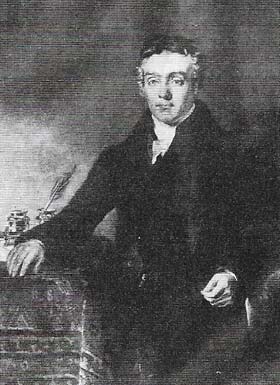 |
| Thomas Chalmers (1789–1847) with a widely influential theologian and preacher. He was, for years, head of the evangelical wing of the Church of Scotland, and then founded the Free Church which broke off at the Disruption of 1843. He abandoned the established church because of his traditional method of choosing ministers - he preferred democratic elections. Within Britain he was celebrated for his book, Christian and Civic Economy of Large Towns, which encouraged the middle classes to believe that the problems of poverty could be cured by generous philanthropic action with a rigorous inquiry into the personal and moral condition of the individual poor. |
The prosperity of heavy industries
The Scottish economy in the nineteenth century was highly successful: to the original base of cotton textiles an important iron industry in the West Central Belt was added in the 1830s, and after 1870 the vitality of the shipyards and steelworks of Clydeside and of jute round Dundee prevented the country from slipping into recession (Fig 3). A third of all ships built in Britain were being built on the Clyde by 1913. The Scots had earned much lower incomes than the English in 1800, but by 1900 the average working man on the Clyde was probably at least as well paid as the average English worker. This sense of prosperity made Glasgow an enormously self-confident business capital – few Scottish firms were controlled from elsewhere – but concealed the fact that Scottish wealth rested on a narrow base of heavy industries.
The impoverished Highlands
The reverse side of the coin was the patchy nature of the wealth. Throughout the Highlands people were very poor: the population increased until 1841, far outstripping the growth of resources, and then collapsed after the potato famine of 1846. Thousands of small-scale tenants were evicted in the "clearances" to make way for sheep (Figure 2); tens of thousands emigrated (Figure 5). By the 1870s and 1880s over-intensive sheep farming had run down the fertility of the land and this, coupled with a dramatic slump in grain and wool prices, led to even further depopulation of the Highlands regions through migration.
Meanwhile those who left were partly balanced by those who arrived. These were Irishmen immigrating into the coalfields and factories of central Scotland where they generally had to take the lowest paid laboring jobs. The urban poor had a hard time; the slums of the great cities were probably the worst in Europe even when the economy was booming (Figures 1 and 7).
To the outside world, however, there were perhaps two main symbols of nineteenth century Scotland: Balmoral (Figure 4), where Queen Victoria gloried in a romantic view of the Highlands far removed from the unpleasant realities of the black houses of the Isle of Lewis; and Scottish science and medicine at the universities. Men such as Lord Kelvin (1824–1907) at Glasgow, or James Clerk Maxwell (1831–1879), the physicist who was professor at Aberdeen, King's College, London and Cambridge, vied in their reputations with Joseph Lister (1827–1912), and James Simpson (1811–1870) who made surgery comparatively safe and painless.
 |
| Joseph Lister (1827–1912) founded modern antiseptic surgery. When he went to work at Glasgow Infirmary in 1861 he found that nearly half the amputation cases died of post-operative gangrene. Lister eventually began to realize that pus formed as a result of infection by germs. He ensured that hands, instruments and dressings were sterilized. This, together with his introduction of sterilized catgut a carbolic acid as an antiseptic, after 1865, dramatically reduced surgical mortalities. |
